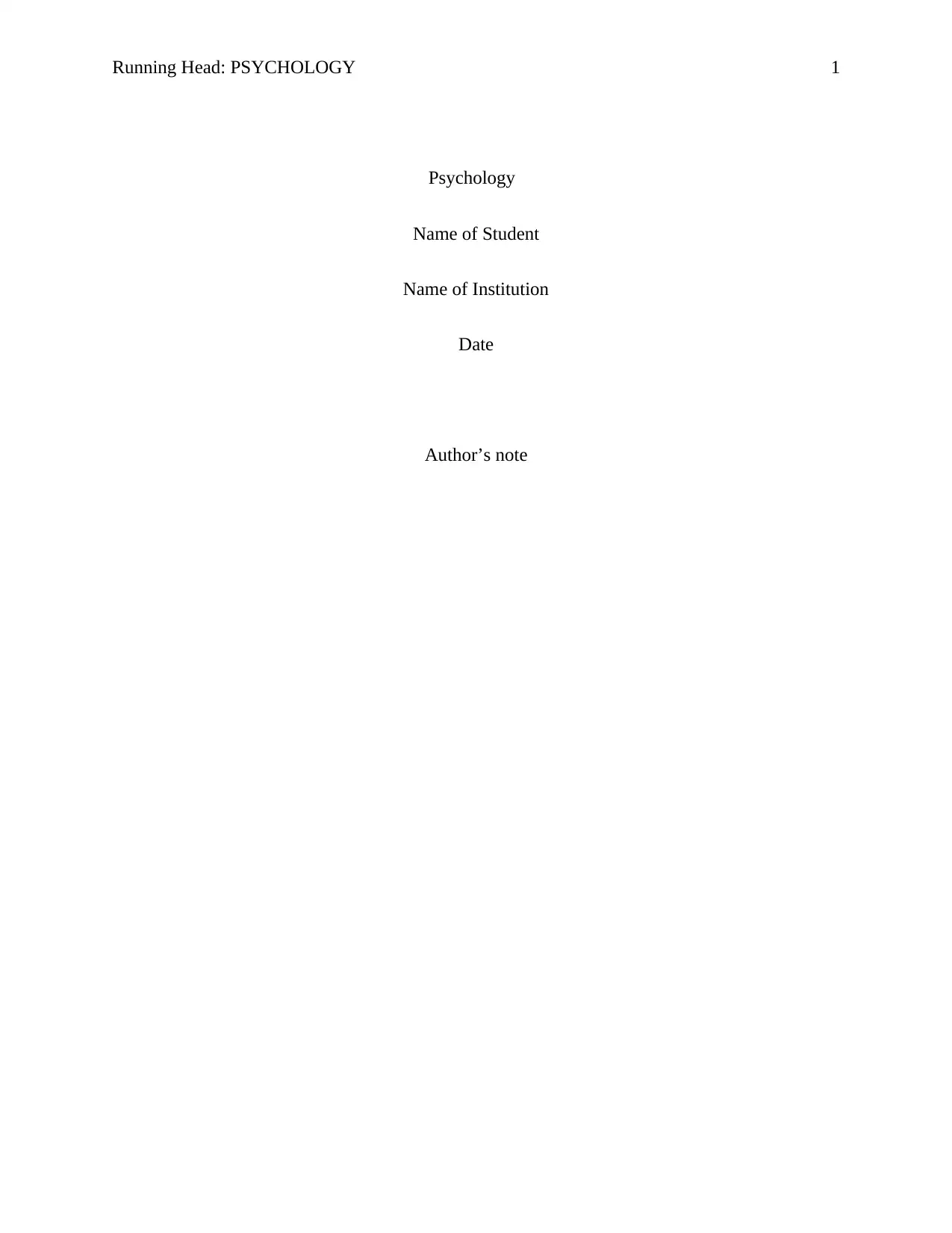Psychology Report: Understanding Borderline Personality Disorder
VerifiedAdded on 2022/09/01
|3
|437
|20
Report
AI Summary
This psychology report delves into the realm of personality disorders, with a specific focus on Borderline Personality Disorder (BPD). The report begins by defining personality disorders, highlighting their impact on an individual's thinking, functioning, and behavior, as well as their origins in both genetic and environmental factors. The report then examines BPD in detail, including its common symptoms such as mood swings, relationship difficulties, and self-harm tendencies. It also discusses the diagnostic process and various treatment options, including Cognitive Behavioral Therapy (CBT). The report concludes by emphasizing the significant impact of personality disorders on daily routines, relationships, and overall well-being, while also mentioning the potential links to substance abuse and social isolation. The report is supported by references to relevant research and scholarly articles.
1 out of 3










![[object Object]](/_next/static/media/star-bottom.7253800d.svg)